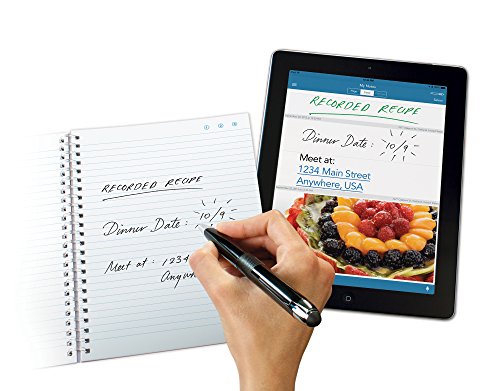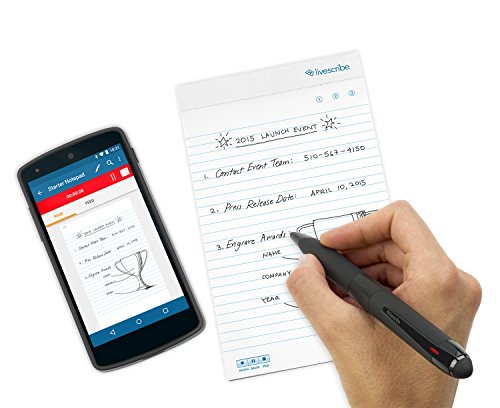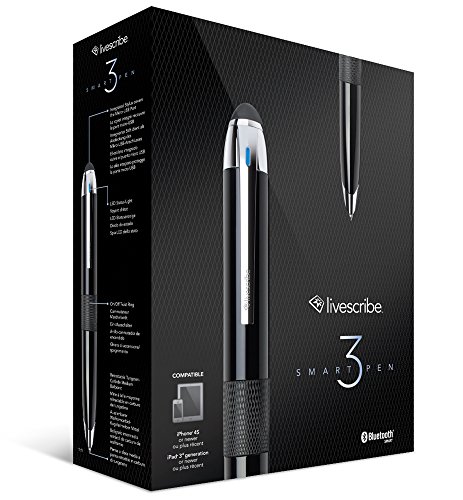Smart Pens – will they be replacing pen and paper?
Smart pens have been around for a while now – the first serious players in this technology sector, ‘Livescribe’ appearing in 2007 with their first edition smart pen.
It’s a far more complex world than you’d imagine as is common when you attempt to fuse an age-old everyday tool with the most modern of technology. As with many emerging technologies, historically, we’ve not taken them very seriously until Apple, or one of the major smart-tech firms brings out its own version. This is the point at which whatever time and life affirming tech in question, becomes part of everyday life.
Here we will take a look at what a smart pen actually is and what some of the main features are.
So what is a smart pen?
The smart pen itself is simply a pen with some additional functionality. Comprising of an ink cartridge of some sort (ballpoint in all products we’ve seen) and the smart bit – pressure sensors; cameras; LED’s; infrared imaging; audio recording and digital storage… these tiny devices are packed with tech. And this is perhaps why their general adoption is taking a little longer than its proponents anticipated. Without the ground swell of public opinion, the pesky pressure of feedback and industry competition, some of the early versions have taken a while to evolve and develop.

We are now however in a different era and there’s little doubt that somewhere down the line, a pen without smart capabilities is going to lose its place in society, disappear from our stationary shops to be swapped for replacement cartridges and USB chargers. In the future, you may find a wry smile creeping across your face as a child brings you a bic – the last pen that truly changed the world – and asks “what is THIS?”.
What’s smart about them?
Put simply, they digitise the process of handwriting. Each manufacturer offers a varying degree of functionality but this is essentially what they all have in common. You write a note, draw a sketch or doodle and, with a kind of magic that none of us fully understand, it appears on your smart device or computer via a dedicated app.
Some smart pens are best suited for drawing and some for note taking and that’s where choosing one gets tricky. Whilst there aren’t hundreds of players in the game, tech companies across the world are now developing smart pens in their own niche areas and we’re of the belief that this is a boom-time for smart pen technology.
Most smart pens on the market right now require you to use a special paper. That means additional expense on notebooks that are a little pricy right now but some allow you to print out your own. So all you need your pen and paper and you’re good to go.

Here’s how it works:
- Turn on your smart pen
- Write your note, draw a sketch, doodle to your hearts content
- Your pen then sends (via cable or bluetooth) your work to your computer, tablet or phone which is readable via the app that links to your pen
It’s then all down to the app – saving in various formats, sending direct to other software… you know how this stuff works
As we’ve said, these smart pens all have varying functions and capabilities so here are a few you should consider when purchasing a smart pen.
Which features do you need?
Writing or drawing?
Most smart pens cover both but they are designed differently with some favouring one format over another. Smart pens were originally only really designed for writing – developed with journalists, lawyers and heavy note takers in mind. They are advancing now to assist artists and designers with a whole plethora of specialist features like nib/brush size and colour.
Handwriting recognition?
Some products have highly advanced handwriting recognition, allowing your app to convert your illegible scribbles into typed text – this is a fabulous tool and where it works better in some products than others, the very best smart pen apps also offer a language translation option too.
Any paper?
Whilst you’d think that being able to write on any paper at all, from napkins to premium note books, would be a bonus, it comes at a cost. The pen needs some way of reading what you’re doing so they come with a clip that you have to attached to the top of whatever you’re writing on. This in our eyes adds a layer of inconvenience that isn’t quite worth if for the average person – whipping your pen out of your pocket and scribbling a note should not require ‘set up’ time.
Audio recording
This is a feature of many of the later smart pens and allows you to add audio notes as you write and play them back as well as save them. This is a great feature for meetings but you need to be aware of the battery life and your storage capacity when taking longer audio recordings.
Battery life and storage
Perhaps one of the most common modern-day problems! How long does it last? Smart pens have significant differences in both battery life and storage capacity so make sure you analyse what you’ll most commonly use your smart pen for and choose accordingly. Needless to say, more storage and longer battery life tends to increase with price.
The question is, do you need one?
This really depends on where you sit on the tech adoption ladder and how you use a pen or pencil in your everyday life. A prolific note taker who’s tech savvy would probably get great use out of the current smart pen offerings but you might struggle to see a return on investment if you’re a tradesman with little desk work in your everyday life. It’s all down to personal preference but early adopters will find themselves perfectly positioned to any changes in the technology as it evolves.
Smart pens have come a long way in their short life and the possibilities for these devices is enormous – scanning and annotating documents, translating text to audio with automatic translation, there’s a whole new world emerging in this sector but… it may be short lived. Why? How long will we continue teaching children to write with a pen, that’s the question?
Long term testers generally have very positive things to say about the technology as a whole but all agree, like with most fancy-fandango tech, commitment is the key to getting the most out of it. If you add a smart pen to your stationary set be prepared to embrace the adjustment phase and maybe eventually, you can ditch the biro.
Top 12 Best Smart Pens
If you have decided to get one, here are you options. You may use the links below to access price and further information from online retailer.

















